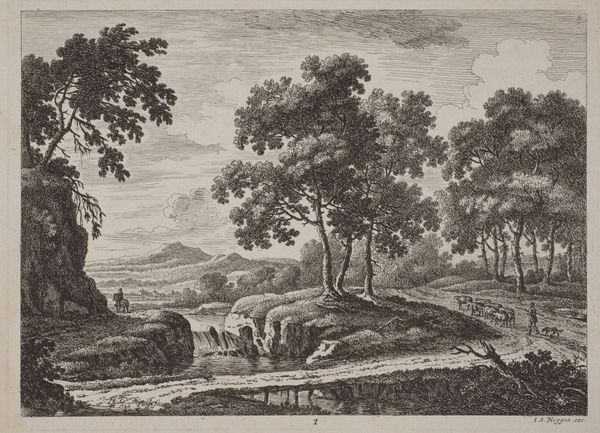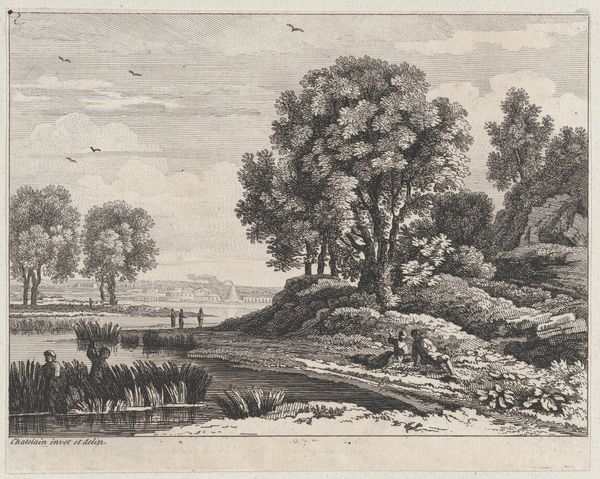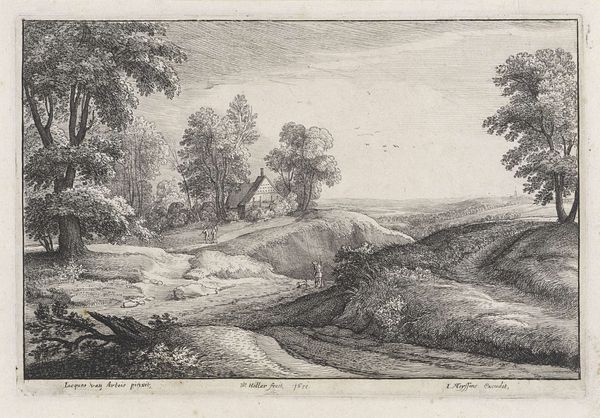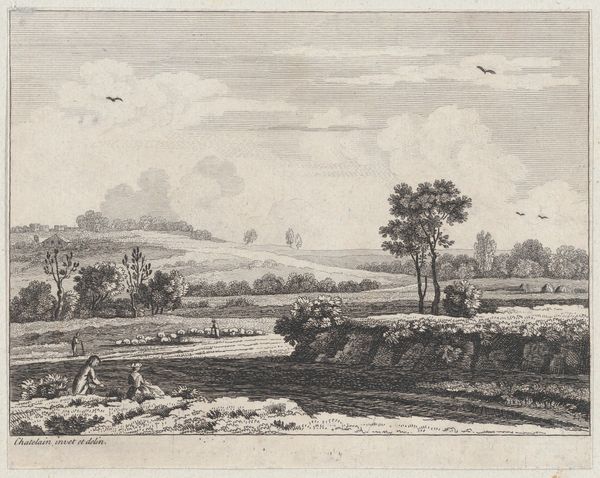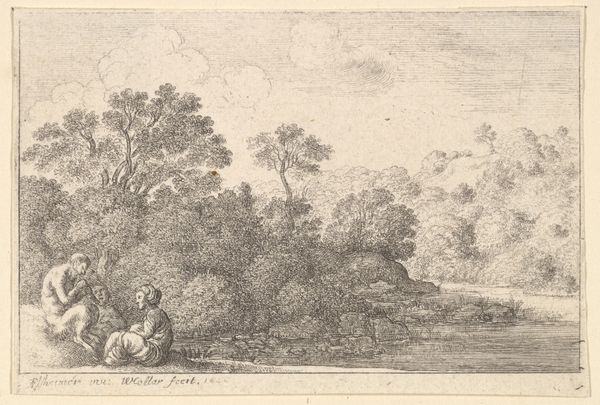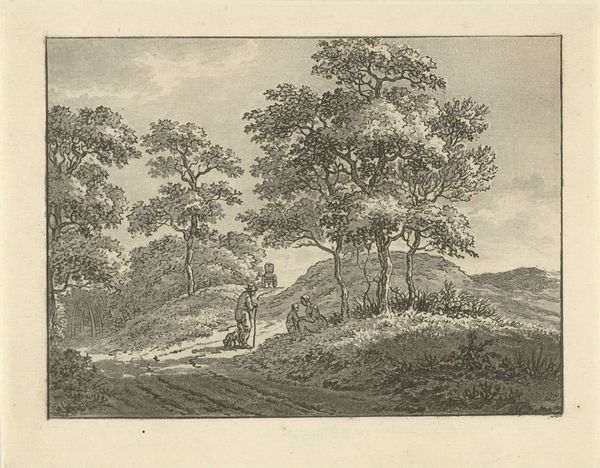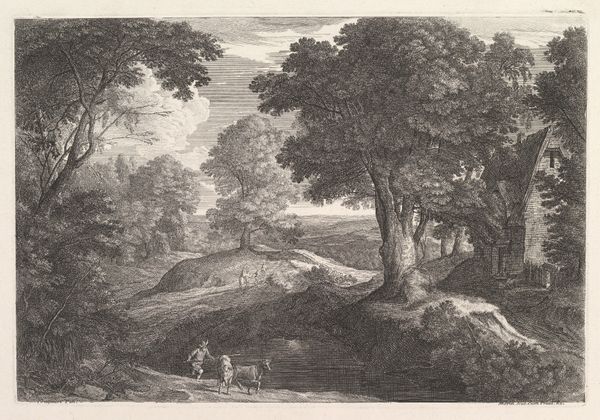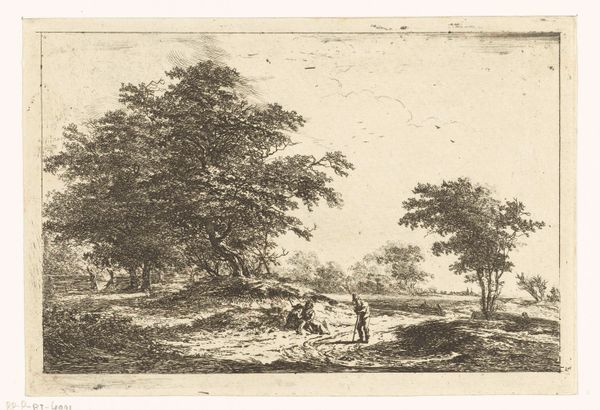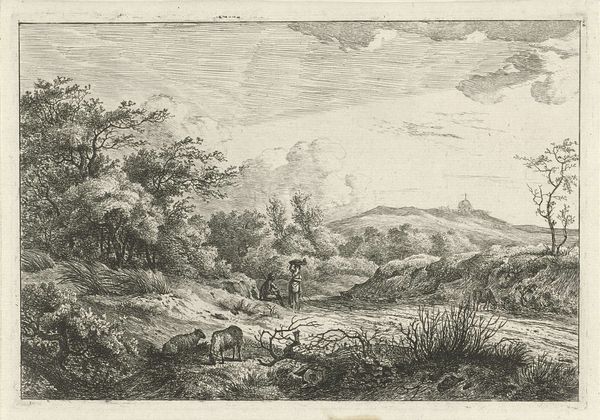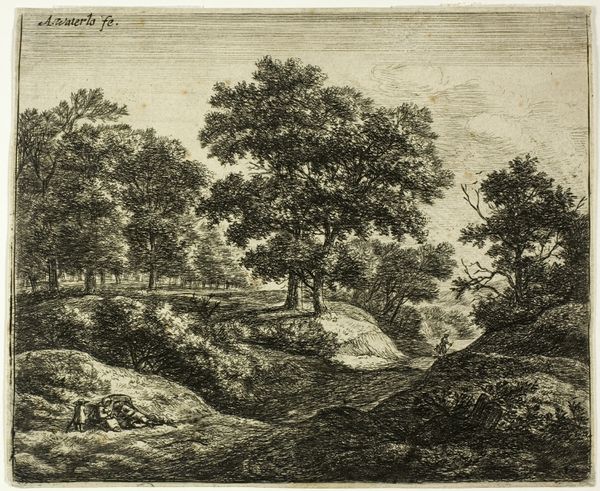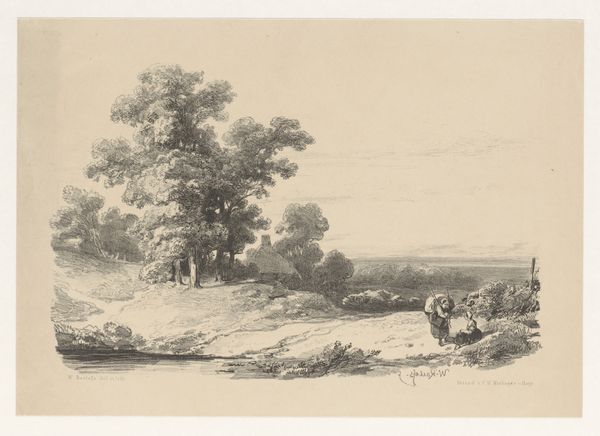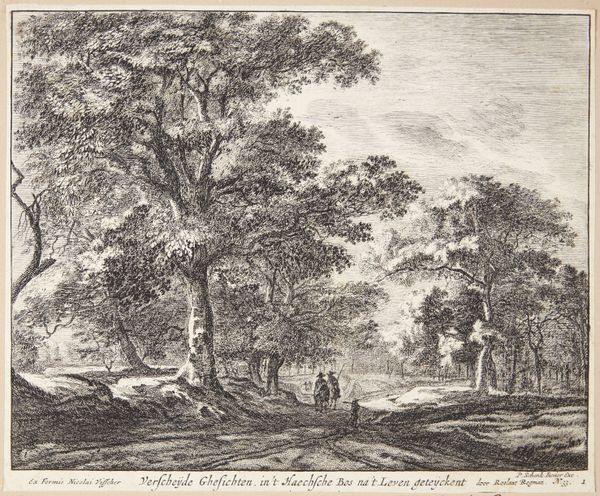
drawing, print, engraving
#
drawing
#
baroque
# print
#
landscape
#
form
#
line
#
genre-painting
#
engraving
#
realism
Dimensions: Sheet (Trimmed): 5 9/16 × 7 1/16 in. (14.1 × 18 cm)
Copyright: Public Domain
Curator: My initial impression is of a dreamlike tranquility, despite the almost harsh linearity of the engraving. It feels like a memory. Editor: We're looking at "Landscape" by Jean-Baptiste-Claude Chatelain, a work dating somewhere between 1725 and 1763. It’s an engraving, currently held here at the Metropolitan Museum. What is it about the linearity that strikes you? Curator: The engraver’s marks are so distinct, creating these very graphic patterns, especially in the foreground. It gives everything this woven, almost manufactured feel. The pastoral elements give the composition some calm, despite being very constructed in appearance. Editor: Yes, Chatelain was deeply influenced by the picturesque movement. He understood how these calculated views contributed to evolving landscape tastes amongst landowners in the 18th century. What might these stylized landscapes have communicated at that time? Curator: Control, certainly. There is a strong sense of order imposed onto nature here. The people walking with the dog, framed within that ordered field—it’s all very composed and purposeful, symbolizing land management as a marker of social status. Editor: And the prominence of clouds, too, often hints at the sublime within the picturesque – the way grand scale or powerful forces remind humans of their smallness. The image becomes about our relative place within a larger structure. Curator: The clouds add another layer of ambiguity because, on the one hand, they signal something greater, but in the graphic format they look like smoke. This gives a sense of threat to that tranquility. It feels like nature could easily take over. Editor: A tension central to the era. These idyllic scenes mask the often-brutal realities of land ownership and resource control in a rapidly changing society. What do you make of its continued relevance? Curator: The desire for control versus nature’s wildness remains central to so many issues. The engraving presents it clearly. Seeing it represented as image allows people to think about these issues anew. Editor: Precisely. This small engraving, born of specific social currents, speaks volumes across the centuries, if we pause to really consider its lines.
Comments
No comments
Be the first to comment and join the conversation on the ultimate creative platform.
